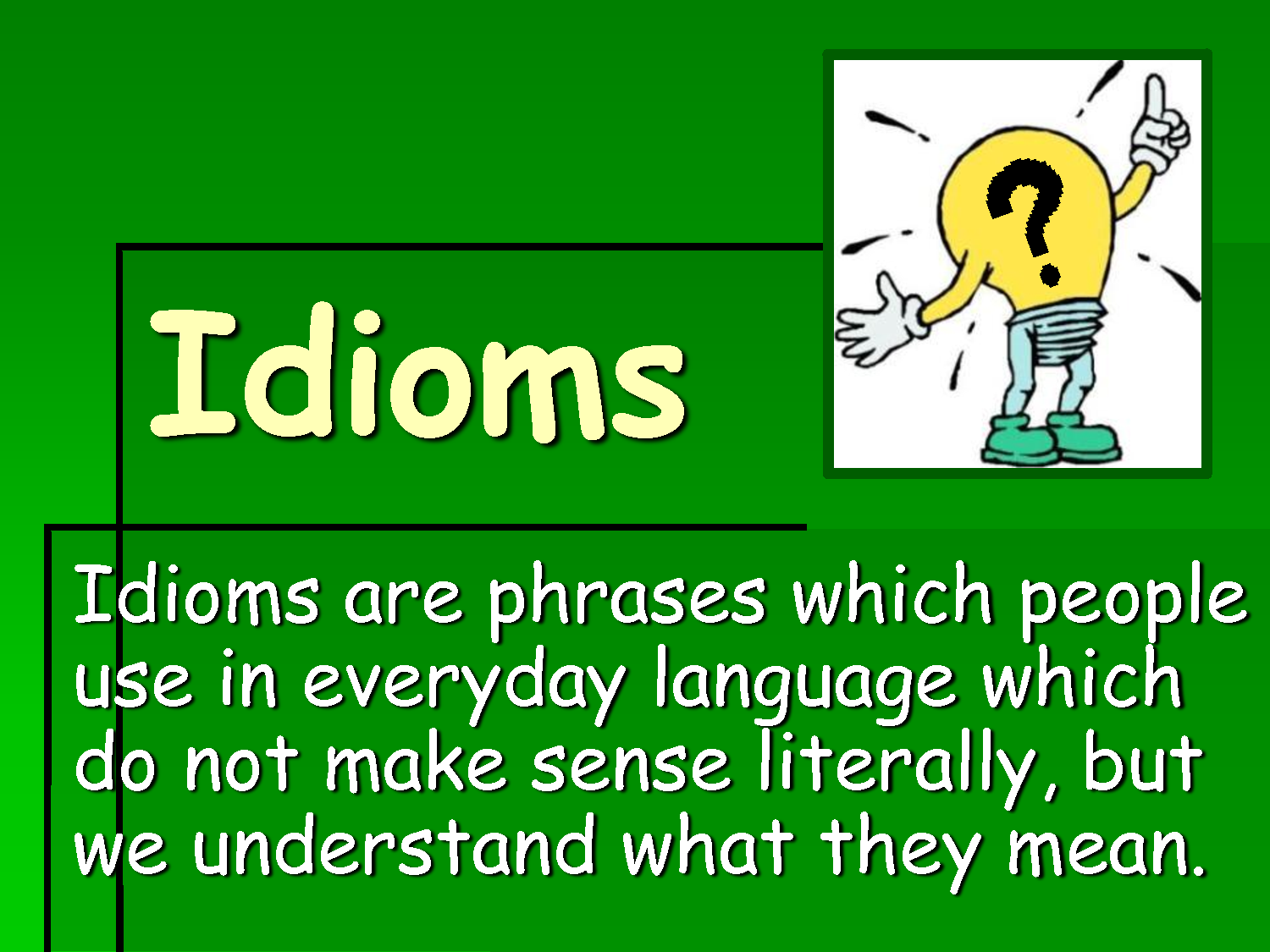The book “English Idioms in Use Advanced Book with Answers: Vocabulary Reference and Practice”, authored by Felicity O’Dell and Michael McCarthy, serves as a comprehensive guide for advanced English learners. This extensive resource focuses on improving the understanding and usage of idioms in English, providing clear explanations and ample practice geared towards advanced-level (C1 to C2) learners. This makes it an excellent choice for self-study or as a supplement to classroom activities.
The content of the book is organized around a myriad of topics, such as ‘Learning’, ‘Formal writing’, and ‘Telling stories’. This structure allows learners to understand and practice idioms within their respective contexts, thus fostering a more intuitive grasp of their usage and meaning. With a multitude of topics covered, readers are likely to find relevant and practical sections that correlate with their specific learning goals or areas of interest.
What sets this book apart is its grounding in Cambridge’s research on the real-world use of English. This ensures that learners are equipped with knowledge that is both academically sound and practically relevant. Additionally, the book offers study tips and follow-up tasks to enhance independent learning, along with an accessible answer key for self-assessment. With its robust content and user-friendly design, this advanced guide by O’Dell and McCarthy is a valuable tool for any serious learner of English.
Introduction to Idioms in English

In the journey of mastering the English language, getting adept at using English idioms constitutes an integral part. Idioms provide a unique flavor to the language, often delivering messages in a more interesting and colorful manner. This unique aspect of English language learning is beautifully captured in the work of Felicity O’Dell and Michael McCarthy in their advanced guide, “English Idioms in Use Advanced Book with Answers: Vocabulary Reference and Practice”. The book serves not only as a reference for English idioms but also offers an enlightening journey into the intriguing world of idiomatic expressions, their origins, and their applications in various contexts.
Comprehending and using idioms proficiently can significantly enhance one’s English vocabulary. Incorporating idioms into speech or writing can make conversations more engaging and writings more vivid. The book by O’Dell and McCarthy serves as a treasure trove of such idioms, aiding learners in expanding their vocabulary and enhancing their expressive abilities. The authors have meticulously classified idioms across various themes, making it easier for learners to assimilate and apply them in the appropriate contexts.
The book’s emphasis on vocabulary development goes beyond mere idiomatic expressions. Through engaging practice exercises and contexts, learners gain exposure to a wide array of vocabulary, from colloquialisms to formal expressions. The authors’ use of real-world contexts, backed by Cambridge’s research, ensures that learners are equipped with a vocabulary that is practical and relevant. The combination of idioms and vocabulary, presented in an appealing and accessible format, makes this book an invaluable resource for anyone seeking to deepen their understanding and usage of the English language.
The Role of Idioms in Effective Communication

As a cornerstone of language, idioms are a pivotal aspect of English communication that learners must master. English idioms, in particular, hold profound cultural significance and encapsulate the spirit and nuances of the language. The uniqueness of idioms lies in the fact that their overall meanings often cannot be deduced from the literal definitions of the individual words, which makes their correct usage both a challenge and a delight for advanced English learners. Books like “English Idioms in Use Advanced Book with Answers: Vocabulary Reference and Practice”, by O’Dell and McCarthy provide an in-depth dive into the world of English idioms, facilitating a more comprehensive understanding of the language.
Moreover, a solid grasp of idioms significantly contributes to vocabulary enhancement. English Idioms are rich reservoirs of expressive language that can add depth and color to conversations and writings. They can make ordinary dialogue more engaging by adding an element of cultural context and can transform plain writing into vivid narratives. Hence, mastering idioms can be an effective strategy for vocabulary expansion, enabling learners to express themselves more clearly and creatively.
That said, it is important to remember that idioms should be used judiciously. While they can add dynamism and authenticity to language, their inappropriate or excessive use can lead to confusion or miscommunication. Therefore, learners should approach idioms with curiosity and respect, understanding their historical origins, connotations, and appropriate contexts for use. Resources like O’Dell and McCarthy’s book can be immensely helpful in this respect, providing a systematic and engaging approach to learning English idioms and building a robust vocabulary.
Understanding the Structure and Usage of Idioms

English idioms, often mystifying for learners, are essential elements of the language. They bring color, depth, and cultural richness to speech and writing, breathing life into conversations and narratives. However, idioms’ uniqueness lies in their collective meanings, which are often unrelated to the literal definitions of the individual words. This characteristic can make learning and using idioms correctly a rewarding challenge for those seeking mastery of the English language.
Building vocabulary is a critical aspect of language acquisition, and English idioms offer a unique pathway to vocabulary expansion. The idiomatic expressions are, in essence, concentrated packages of language, each carrying a wealth of cultural references, historical context, and expressive potential. Acquiring a robust knowledge of idioms can help language learners enrich their expressive range and engage in more nuanced and culturally aware communication. It’s not just about memorizing individual words, but expanding one’s ability to express complex thoughts, emotions, and concepts effectively.
However, idioms should be approached with caution as they can lead to misunderstandings if used inappropriately or excessively. Therefore, learning resources that promote a systematic understanding of idioms, such as books dedicated to idiomatic expressions, are invaluable. These resources can help learners understand the origins, connotations, and appropriate usage of idioms within various contexts, thereby fostering a more precise and effective use of the English language. Mastery of idioms, combined with an enriched vocabulary, will ultimately elevate a language learner’s proficiency and confidence in English communication.
Exploring Idioms in Different Contexts

English idioms constitute a fascinating element of the English vocabulary. They are more than just a collection of words; they carry cultural significance, historical narratives, and linguistic richness that can drastically enhance a speaker’s or writer’s ability to communicate effectively. Understanding idioms requires a deep dive into the underlying contexts, the subtle nuances, and the dynamic usage of the English language. They are a linguistic tool that, when wielded effectively, can add color, depth, and expressiveness to conversations and written expressions.
The vocabulary of the English language is vast and varied, encompassing everything from formal and academic words to colloquial and slang expressions. Within this broad spectrum, English idioms hold a special place. They serve as a bridge between different styles of language use, allowing speakers and writers to navigate seamlessly between formal and informal contexts. Moreover, a strong vocabulary is foundational to mastering idioms, as it equips learners with the words and phrases necessary to understand and correctly use these often enigmatic expressions.
May Help You:
Mastering Verbs and Tenses: A Linguistic Journey with George Davidson
Enhancing Your Word Power with The Vocabulary Builder Workbook: An In-depth Review
The apt usage of English idioms can illuminate different contexts such as ‘learning’, ‘formal writing’, and ‘telling stories’, adding a layer of complexity and sophistication. In a learning context, idioms can serve as a fun and engaging way to explore the eccentricities of the English language, fostering a deeper understanding and appreciation for its versatility. In formal writing, idioms can be employed strategically to convey complex ideas with finesse and precision, while in storytelling, they can dramatically enhance narrative quality, providing the writer with a unique way to captivate and connect with the audience. Thus, English idioms, coupled with a robust vocabulary, offer a powerful toolkit for anyone trying to master the English language.
The Importance of Context in Understanding and Using Idioms

English idioms, with their intriguing expressions and deep cultural roots, present a unique aspect of linguistic exploration. These phrases, composed of seemingly ordinary words, when combined, form meanings beyond their literal interpretation, adding an additional layer of richness and color to the language. Mastering idioms can enhance a language learner’s vocabulary, equipping them with a greater expressive capacity. The use of idioms can transform simple dialogues into engaging conversations, infusing them with cultural nuances and historical references.
Vocabulary enhancement is a fundamental part of language learning and idioms offer a unique pathway to achieve this. Each idiom is like a microcosm of language – a compact blend of words that carry cultural significance, historical context, and an expressive potential. From the language learner’s perspective, understanding and using idioms is not just about learning new phrases. It’s about expanding their ability to express complex thoughts, emotions, and abstract concepts in a more nuanced way.
However, the right usage of idioms can be tricky and calls for a careful approach. The richness of English idioms’ cultural and historical ties can also become a source of confusion or miscommunication. Therefore, it’s crucial to learn idioms with a strong understanding of their origins, connotations, and appropriate contexts. Developing a robust knowledge of English idioms and their correct usage can ultimately enhance one’s English vocabulary, and more importantly, their proficiency and confidence in English communication.
Cambridge’s Real-World Research and its Impact on Learning Idioms

English idioms, with their rich historical context and cultural implications, offer an intriguing avenue for vocabulary expansion. They provide a window into the cultural and historical narratives embedded within the English language, enriching a learner’s linguistic journey. These idiomatic expressions are more than mere combinations of words; they are condensed linguistic packages that encapsulate complex thoughts, emotions, and concepts. Consequently, they serve as an instrumental tool in enhancing vocabulary and fostering a more nuanced and culturally aware manner of communication.
Understanding and mastering idioms, however, is not a straightforward task. The profound cultural and historical ties that give idioms their richness can also make them confusing and, at times, a source of miscommunication. It is not enough to learn idioms in isolation; a comprehensive and systematic understanding of their origins, connotations, and appropriate contexts is crucial. This nuanced understanding ensures that idioms are used effectively and appropriately, promoting a more precise use of the English language.
Cambridge’s real-world research on idioms has proven its significant impact on learning and using idioms. This research, focusing on the use and understanding of idioms in real-world contexts, provides invaluable insights for language learners. The findings underscore the importance of a well-rounded vocabulary as the foundation for understanding idioms. They also emphasize the need for careful and contextually appropriate use of idioms. Ultimately, mastering English idioms, bolstered by an enriched vocabulary, can significantly elevate a language learner’s proficiency and confidence in English communication.
Utilizing Study Tips and Follow-Up Tasks for Better Learning

English idioms, those peculiar expressions that add flavor and color to the language, hold a unique place in the vast vocabulary of English. Through their cultural significance and historical ties, idioms provide a lens into the rich and vibrant tapestry that is the English language. They are more than just a collection of words; they carry a depth of meaning that can often be elusive to non-native speakers. However, the mastery of these expressions, coupled with a robust English vocabulary, can significantly elevate a language learner’s proficiency and confidence in communication.
The study of English idioms often goes hand in hand with vocabulary enhancement. Each idiom, a microcosm of language in its own right, is a compact blend of words carrying an expressive potential that far exceeds their literal meanings. They offer learners an intriguing and engaging way to expand their vocabulary, fostering a deeper appreciation for the versatility of the English language. As learners dive into the world of idioms, they not only acquire new phrases but also broaden their capacity to express complex thoughts, emotions, and abstract concepts with more nuance.
Yet, the path to mastering English idioms is not devoid of challenges. The cultural richness and historical ties that make idioms so intriguing can also become sources of confusion or miscommunication. Therefore, it is crucial for learners to approach idioms with a keen understanding of their origins, connotations, and appropriate contexts. Armed with this knowledge, and a well-rounded vocabulary, learners are better equipped to navigate the nebulous terrain of idioms and their usage, ultimately enhancing their command over the English language.
Self-Assessment: Using the Accessible Answer Key

Understanding English idioms is an essential part of improving English vocabulary. These colorful expressions offer a glimpse into the rich cultural history and linguistic diversity of the English language. For learners, idioms can serve as an interesting means of expanding their vocabulary, bringing an element of fun and engagement to the process. Moreover, idioms can be a useful tool in understanding the intricacies of English, as they often employ vocabulary in a non-literal and contextually rich manner.
Furthermore, the study of English idioms opens a pathway for learners to deepen their understanding of the English language and its cultural nuances. Each idiom represents a unique blend of words with a meaning beyond the literal interpretation of its components. As learners delve into the world of idioms, they not only learn new words and phrases but also gain insights into the subtleties of context and connotation in English communication. This enrichment of vocabulary, in turn, enhances their ability to express complex thoughts and emotions more effectively and with greater nuance.
However, the journey to mastering English idioms and enhancing one’s vocabulary is not without its challenges. The cultural connotations and historical contexts that give idioms their richness can also lead to misunderstanding or miscommunication. It’s crucial, therefore, for learners to approach idioms with an understanding of their origins and appropriate usage. This careful approach ensures that idioms become a powerful tool in their arsenal, enabling them to navigate the complexities of the English language with increased confidence.
Conclusion: The Value of O’Dell and McCarthy’s Advanced Guide for English Learners

English idioms are a fascinating component of the English language, providing language learners with a unique perspective into the culture and history that have shaped its development. These idioms, far from being mere expressions, are miniature stories embedded within the language. Each idiom carries a wealth of cultural and historical significance, offering learners a deeper, more nuanced understanding of English. Mastery of these idioms not only enhances vocabulary but also brings learners closer to the heart of English, its cultural richness, and historical depth.
Incorporating English idioms into a learner’s vocabulary can be a challenging yet rewarding endeavor. The complexity of idioms lies in their non-literal meaning, often derived from historical or cultural contexts unfamiliar to non-native speakers. Yet, tackling this challenge can lead to significant strides in vocabulary expansion. Each successful encounter with an idiom offers learners a glimpse into the linguistic creativity of English, adding a new, vibrant layer to their growing vocabulary.
However, while English idioms are a valuable resource for vocabulary enhancement, they should be approached with care. Misunderstanding or misusage of idioms can lead to confusion or even unintended offense, given their cultural and historical connotations. Therefore, while the study and usage of idioms can greatly enrich a learner’s vocabulary, it is critical that learners develop a robust understanding of their correct usage, meaning, and context. With a careful and thoughtful

